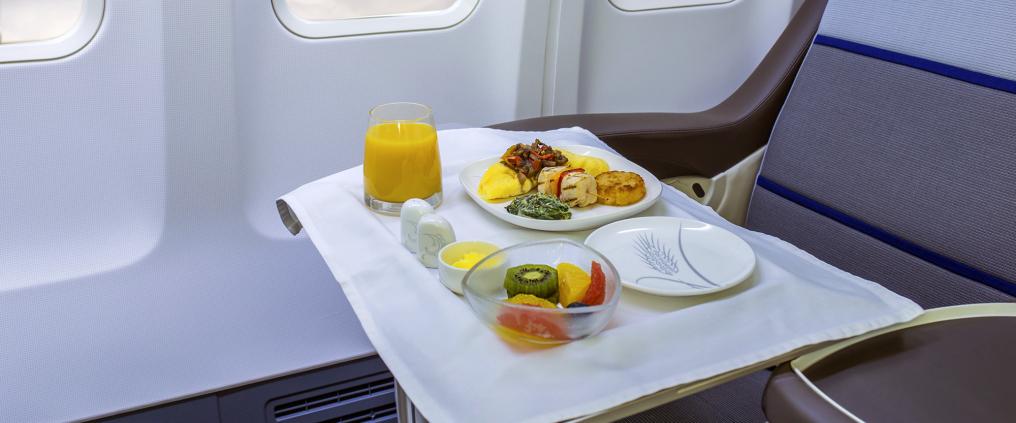Why does tomato juice taste so good during the flight?
Airline catering service provider LSG Sky Chefs delivers roughly 8,000 meals to aeroplanes departing from Helsinki Airport every day. Most airlines use its services.
'We provide both products made in our own kitchens and those made by our food manufacturing facilities in Germany. In our Vantaa kitchens we prepare business and economy-class meals, as well as portions for VIP flights', explains Pauliina Palttala, in charge of communications at LSG Sky Chefs.
Eating habits on aeroplanes have changed substantially in recent years. The current trend is to offer passengers the freedom of choice.
In economy class and on short flights, typical offerings are cold, snack-type options. Most airlines also offer the opportunity to order hot meals for an additional fee. Long-haul flights still include hot meals.
Fine dining at high altitudes
In business class, meals have become an important means for standing out, and airlines put a lot of effort into them.
Raw material characteristics must be taken into account when planning, as our sense of taste grows 10–20% weaker in a pressurised cabin, a bit like when you have a cold.
'Seasoning requires generous amounts, but also accuracy as we cannot exceed general salt recommendations. In-flight meals must contain ingredients with plenty of natural flavour and the fifth basic taste – umami', explains Juha Stenholm, in charge of product development at LSG Sky Chef.
'Most vegetables and mushrooms, oily fish, and one of the favourites – well-done meat – work well in aircrafts. The harmony of flavours is, of course, paramount'.
Producing the meals is only half of the work. Finished portions are cooled down, packed in oven-proof containers, and transported to aeroplanes ready for reheating. The food must withstand movement, vibration, take-offs, and landings throughout the process. Space is limited too, as service carts aren't very roomy.
'In-flight meals are largely dependent on logistics. They should also not contain complex arrangements and the sauces shouldn't be too runny', Palttala adds.
In addition, it is important to ensure that all components can be heated up to roughly the same temperature within the same amount of time.
The colours of the meal are another matter to bear in mind. At high altitudes colours tend to appear washed out, and green can easily look greyish, for instance.
Secret weapon: umami
What makes tomato juice such a popular choice from drink carts?
'The secret is the umami flavour in tomatoes. Various tomato-based sauces and accompaniments are often included in meal trays', she continues.
Meals are planned in conjunction with airlines, as well as on the basis of passenger feedback. It appears that meatballs have remained a top choice in all flight classes, year after year.



